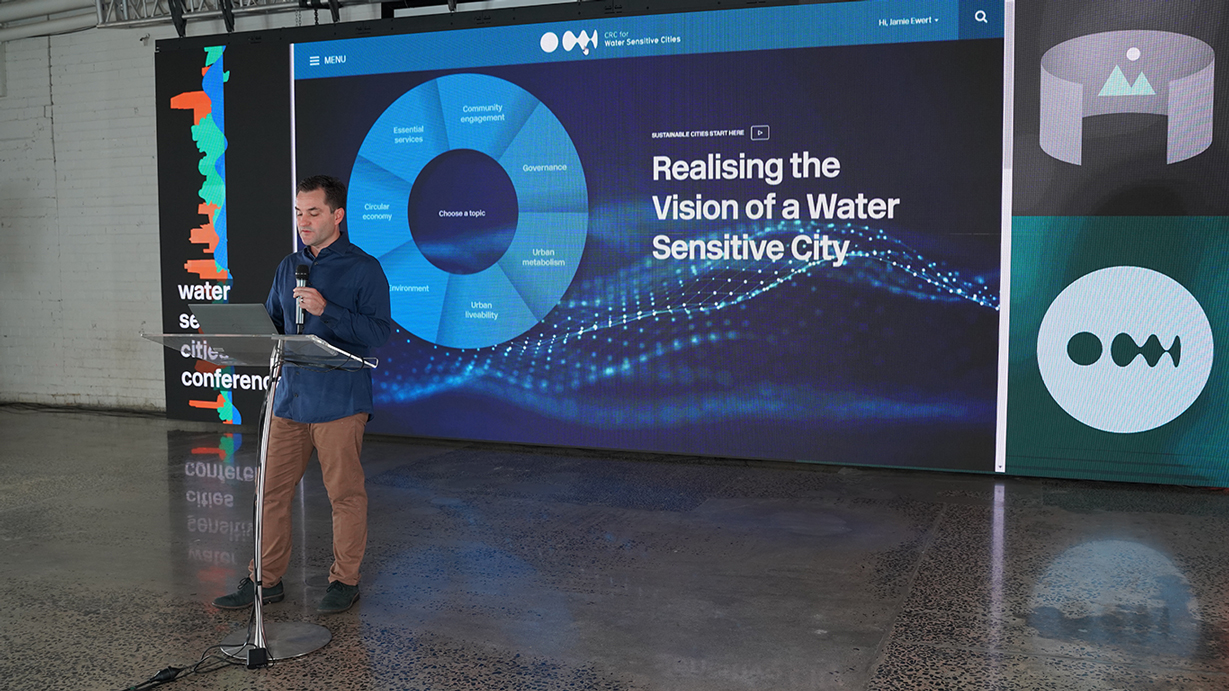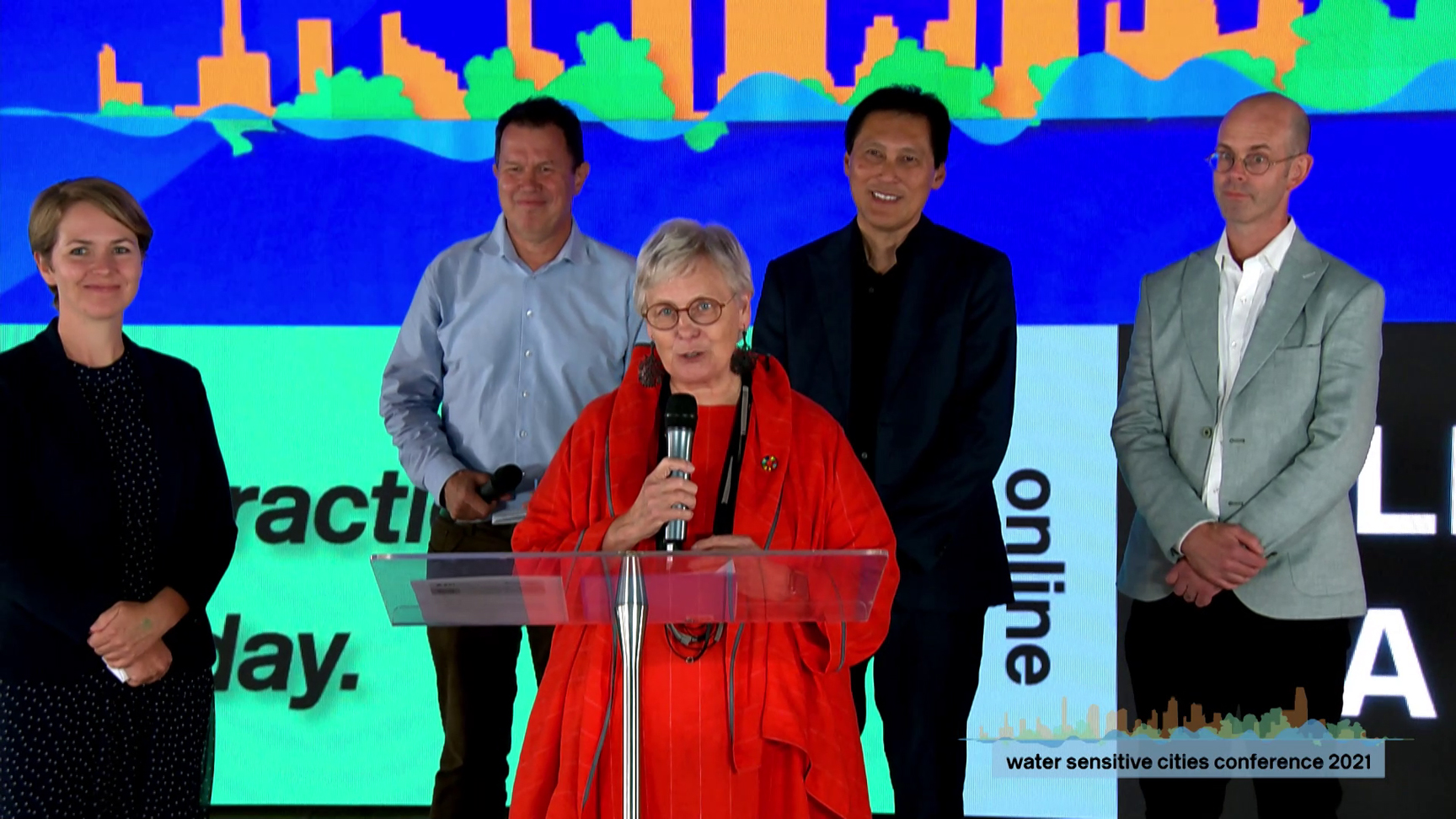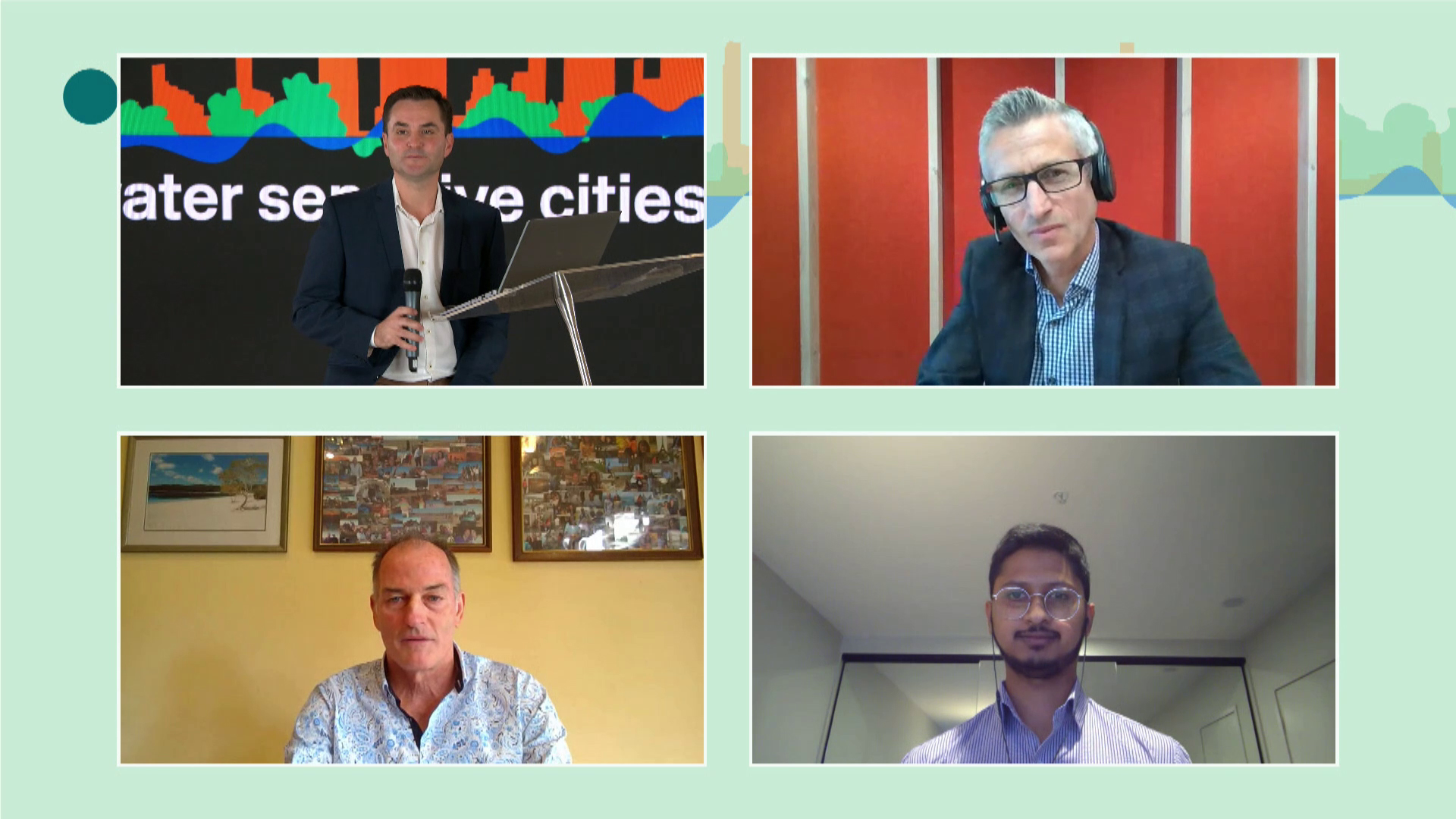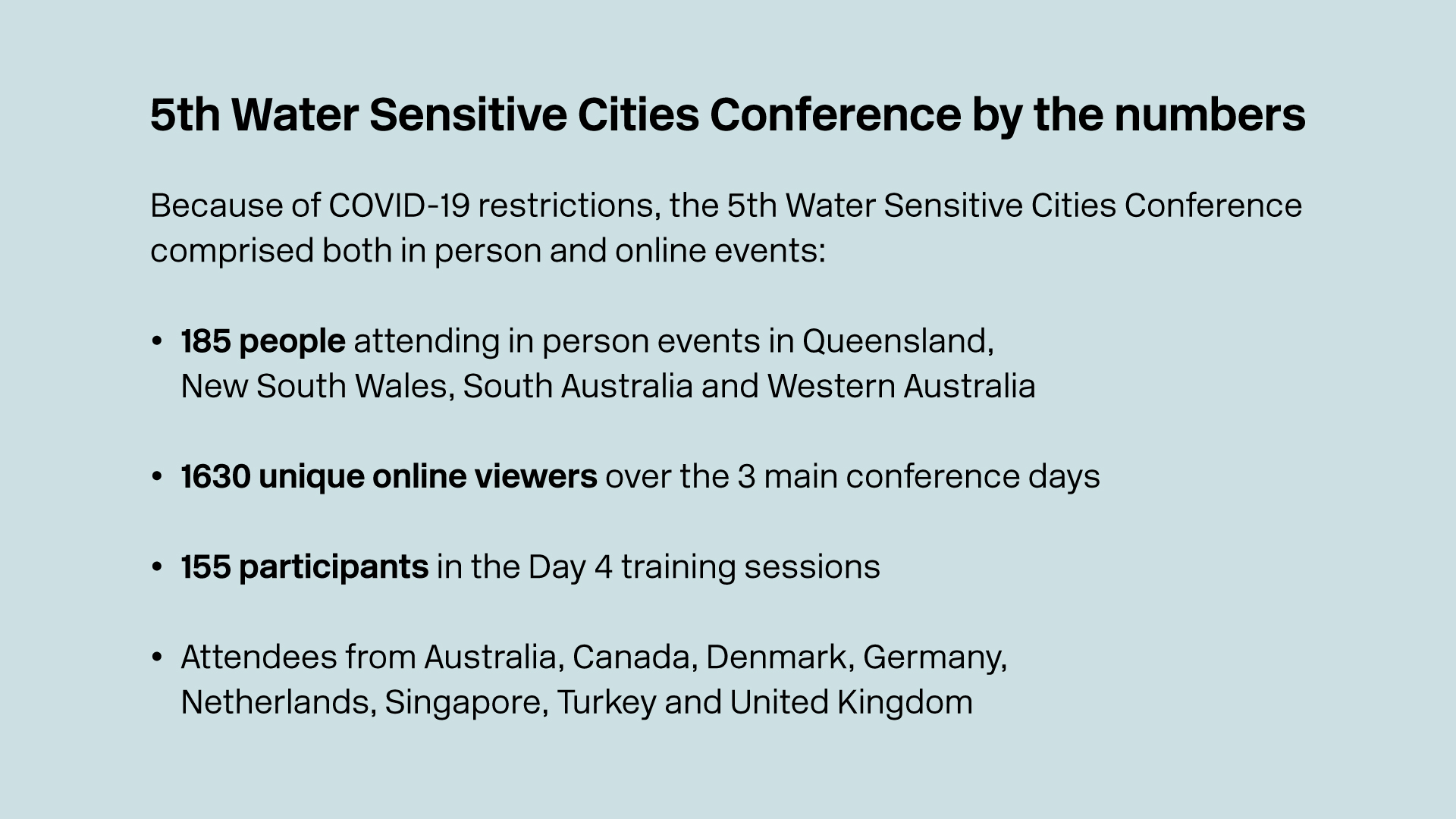Demonstrating water sensitive practice in every city, every day
Water sensitive practice. Every city. Every day.
This was the focus of the 5th Water Sensitive Cities Conference (15–18 March 2021). After 9 years, we wanted to explore the activities and celebrate the achievements of the CRC for Water Sensitive Cities (CRCWSC).

In the days after the conference, the feedback from attendees has been very positive – they enjoyed their experience, despite the occasional technical glitch in the livestreaming. They particularly appreciated the novel resources (such as the virtual site tours) and the hybrid delivery (which included a mix of in person and online opportunities).
This model for virtual conferences helped us reach a far bigger audience (see the box below). In the past, our Water Sensitive Cities Conferences have attracted audiences of 200–250 people. This time, we reached almost 2000 people!
Across the four days, we explored several questions:
How far have we come? What does water sensitive practice look like on the ground?
Best practice case studies were the cornerstone of the conference program, demonstrating how water sensitive cities can be the new normal. Each state showcased a mix of projects, and collaboration was a consistent theme, seeking out multiple benefits from projects, and pleasingly, projects being delivered on the ground.
A series of virtual site tours of projects in Queensland, Victoria, South Australia and Western Australia showcased waterway transformations, new water sensitive urban developments and alternative water sources. A wealth of information on their own, the site tours were accompanied by live Q&A sessions with the people who implemented these projects.
Several case studies and site tours provided examples of the CRCWSC tools in action. Reinforcing these examples, a national session on day 2 demonstrated how CRCWSC tools and processes had been applied around Australia: Townsville and Norman Creek in Queensland, Salisbury in South Australia and Knutsford in Western Australia. These case studies showcased CRCWSC tools and practices, from visioning to project selection to implementation.

Supporting this growing practical experience, we heard from two keynote speakers who emphasised the benefits of water sensitive approaches:
Herbert Dreiseitl, a renowned landscape architect, urban designer, water artist and interdisciplinary planner, told us to put people at the centre of our designed for water projects. He reminded us that cities are about people, so we need to involve the community in designing and creating urban spaces. We particularly need to involve young people because it’s their future that’s being affected. He showed us examples of water projects that provide critical services, but also create fun and interesting urban spaces. And lastly, he stressed that beautiful and functional spaces don’t have to be expensive.
Distinguished Professor Billie Giles-Corti built on this theme by challenging water professionals to play a more active role in building liveable cities. She told us the concepts are well understood; now, it is time for the water sector to be more specific about the actions it will take. To illustrate, she explained how the built environment affects our health and wellbeing. In particular, we can design and build cities that can reduce the incidence of chronic illness. We can mitigate some of these negative aspects of urban living by creating urban spaces that have trees, green open spaces and active transport options. And water can be an essential ingredient in creating these urban spaces if we establish shared objectives for greening and tree cover, and specify metrics that describe water’s contribution to liveable cities.
The conference was also an opportunity for participants to develop new skills. We held workshops on integrating urban and water planning, and discussed how water practitioners can use and influence the planning system to deliver decentralised, non-standard water solutions. In particular, the corridor (or plan making) scale can be a key mechanism for examining how urban development will affect the total water cycle. We have developed a framework for guiding collaboration at this level to create urban water services that are place-based and fit for purpose. (Check out our item on the framework in this edition of waterSENSE.)
Conference attendees also attended overview training sessions on other CRCWSC tools: the WSC Index and Transition Dynamics Framework, the Scenario Tool, the Benefit Cost Analysis Tool and Value Tool, the Infill Typologies Catalogue, the Infill Performance Evaluation Framework, the Site-scale Urban Water Mass Balance Tool, and the RESTORE Tool. These overview training sessions provided a ‘taster’, so attendees could find out how the tools work and how they can be applied.
You can find out more about these tools on our relaunched website – now known as the Knowledge Platform. All of the tools, research outputs and other resources are now available in an easy to navigate website. Just go to www.crcwsc.org.au

And where to from here? How do we maintain momentum for water sensitive practice?
We’ve proved water sensitive practice can create more liveable, resilient, sustainable and productive cities. But how do we mainstream water sensitive practices, so that they are applied in every city every day?
A panel of experts discussed how we foster the political will to create water sensitive cities. We know what to do and how. So how come water sensitive practice is not business as usual? According to our panel, making water sensitive cities practice business as usual requires clear objectives, well defined roles and responsibilities, and a regulatory framework that values the other (often intangible) benefits of water sensitive approaches, such as ecosystem, health and amenity benefits.
At the close of the third day, CRCWSC Chair Cheryl Batagol paid tribute to all involved with the CRCWSC, who helped bring these water sensitive projects to life – the researchers who developed new knowledge, the industry partners who helped to translate research into proofs-of-concept and works on-ground, and CRCWSC staff who also conducted research, supported researchers and industry partners, delivered capacity building events and drove mainstreaming activities. Cheryl confirmed the CRCWSC’s important work would continue after June 2021 through the Monash Sustainable Development Institute (MSDI) which will become the new home of Water Sensitive Cities at Monash University. MSDI’s Director, Professor Tony Capon accepted this handover and restated the university’s commitment to further developing CRCWSC tools and outputs and to mainstreaming water sensitive practices.
Don’t forget our conference webinars
The formal part of the conference is complete, but our conference webinar series is just beginning. Due to COVID restrictions, we transformed our national day into webinars, starting this week. You’ll find the details here.
